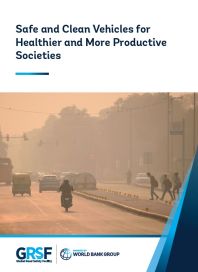
New Report Highlights How Vehicle Standards Can Save Lives and Improve Air Quality
May 15, 2025
GRSF has released a new report, Safe and Clean Vehicles for Healthier and More Productive Societies, offering compelling evidence that upgrading vehicle safety and emissions standards—especially for used vehicles—can deliver major health and economic benefits for emerging and developing economies.
Motorization is accelerating rapidly in many parts of the world, driven by urbanization and a growing demand for mobility. But while access to vehicles is expanding, the safety and environmental quality of those vehicles often lags behind. As a result, vehicle-related air pollution now claim more than 550,000 lives annually and impose an economic burden of nearly $800 billion per year. In addition, road crashes kill an estimated 1.19 million people per year.
While electric vehicles help reduce tailpipe emissions, they make only a modest dent in public health risks unless accompanied by strong vehicle standards and fleet renewal policies. The report finds that the largest safety and air quality gains come regulating both new and used vehicle imports, enforcing compliance with safety and emissions standards, and retiring old, unsafe vehicles from the fleet.
This comprehensive “motorization management” approach can reduce fatalities and serious injuries by up to 9%, while significantly curbing toxic emissions that impair cognitive development in children and drive long-term disability.
The report includes policy modeling across eight countries—Argentina, Brazil, Arab Republic of Egypt, Ghana, India, Kazakhstan, Lao PDR, and Mexico—and provides practical recommendations that can be adapted to a wide range of country contexts.
By aligning vehicle safety, emissions control, and inspection policies, countries can not only reduce road traffic deaths and injuries—they can also protect human capital, improve air quality, and support more productive, resilient economies.

